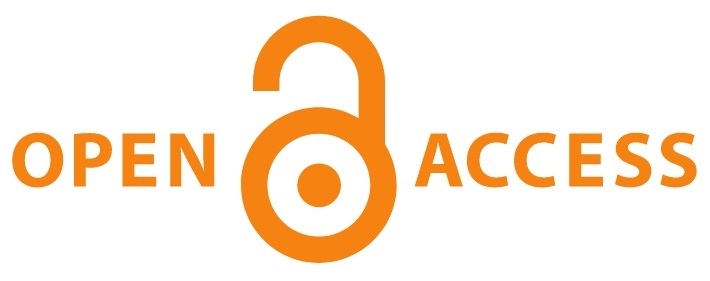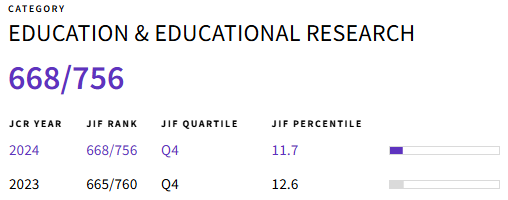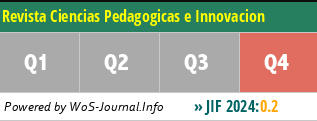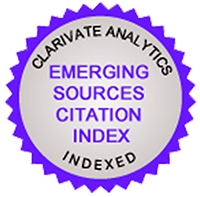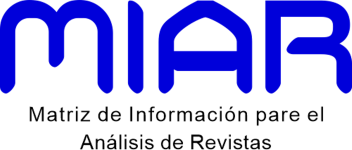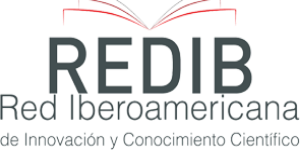Índice de calidad web: análisis situacional de la website turística de la provincia de Santa Elena
DOI:
https://doi.org/10.26423/rcpi.v10i2.634Palabras clave:
índice de calidad web, turismo, web turísticaResumen
Actualmente, el turista, al organizar y planificar su viaje acude a las websites que proporcionan información y servicios en un solo click. Si el destino turístico no tiene un sitio web oficial o está configurado de manera deficiente, simplemente este destino no existe para el turista. En este contexto, en la provincia de Santa Elena no se dispone de información sobre la calidad de las websites turísticas que muestren sus beneficios o sus falencias. El objetivo de la presente investigación fue conocer la situación de la website turística de la provincia de Santa Elena a partir de la evaluación del índice de calidad web. La metodología aplicada la desarrolló CODETUR (Comunicación Online de los Destinos Turísticos) y analiza los sitios web desde cuatro aspectos: técnicos, comunicativos, persuasivos y relacionales. De los resultados obtenidos, la mejor puntuación la obtuvieron las dimensiones técnicas y comunicativas; las variables estructura del sitio, facilidad de acceso y posicionamiento tienen mayor valoración, mientras que los aspectos a mejorar son la calidad y persuasión turística, lo que dependerá de una mejor aplicación tecnológica que conduzca a la integración en la página web de motores de búsqueda y sistemas de reservas; así mismo, elementos de convertibilidad web que permita habilitar la página web en dispositivos móviles; y pasar a una web 2.0, donde sea posible interactuar entre clientes y clientes además de, clientes y ODM (Original Design Manufacturer). Las evidencias respecto al desarrollo web, muestran a la provincia en una etapa primitiva, donde los indicadores de calidad web no son tomados en cuenta en la elaboración y producción de sitios web turísticos.
Descargas
Referencias
Andrade, D. (2016). Estrategias de marketing digital en la promoción de Marca Ciudad. Revista Escuela De Administración De Negocios (80), 59 - 72. https://doi.org/10.21158/01208160.n80.2016.1457
Anganes, A., Pfaff, M., Drury, J., y O´Toole, C. (2016). The heuristic quality scale. Interacting with computers, 28(5), 584 - 597. doi:https://doi.org/10.1093/iwc/iwv031
Buonincontri, P., y Micera, R. (2016). The experience co-creation in smart tourism destinations: a multiple case analysis of european destinations. Information technology & tourism, 16(3), 285 - 315. doi:10.1007/s40558-016-0060-5
Codina, L. (2004). Evaluación de calidad en sitios web: proyectos de estudios sectoriales y realización de auditorías. Jornades Catalanes d`Informaciò i documentaciò, 25, 59 - 72. https://cobdc.org/wp-content/uploads/Lluis-Codina.pdf
Domínguez, T., Gozález, E., Arújo, N., y Fraiz, J. (2021). Indicators of website features in the user experience of e-tourism search and metasearch engines. Journal of theoretical and applied electronic commerce research, 16(1), 18 - 36. doi:http://dx.doi.org/10.4067/S0718-18762021000100103
Eisenberg, B., Quarto-vonTivadar, J., y Davis , L. (2009). Always be testing: the complete guide to google website optimizer. Indiana: Wiley Publishing,Inc. http://www.johnquarto.com/Always_Be_Testing.pdf
Fernández-Cavia, J., Rovira, C., Díaz-Luque, P., y Cavaller, V. (2014). Web quality index (WQI) for official tourist destination websites. Proposal for an assessment system. Tourism management perspectives, 9, 5 - 13. doi:10.1016/j.tmp.2013.10.003
Fernández-Villarán , A. (2017). Promoción y comercialización de productos y servicios turísticos locales. España: Paraninfo,S.A. https://www.libreriamoriarty.com/es/libro/promocion-y-comercializacion-de-productos-y-servicios-turisticos-locales_1819780265
Garrett, J.-J. (2011). The elements of user experience: user-centered design for the web and Beyond. Estados Unidos de América: Longman.
González , C. (2018). Análisis del sitio web "Guayaquil es mi destino" bajo parámetros de calidad del CODETUR para diseñar estrategias de mejora [Tesis de licenciatura]. Universidad de Guayaquil. http://repositorio.ug.edu.ec/bitstream/redug/38959/1/CAROLINE%20GONZALEZ%20ANDRADE%20TESIS.pdf
Groth, A., y Haslwanter, D. (2015). Perceived Usability, Attractiveness and intuitiveness of responsive mobile tourism websites: a user experience study. I., Tussyadiah, A., Inversini (eds.) Information and communication technologies in tourism, 593 - 606. doi:https://doi.org/10.1007/978-3-319-14343-9_43
Hassan, Y., y Martín, F. (2003). Guía de evaluación Heurística de sitios web. Revista sobre personas, diseño y tecnología. ISSN 1886-8592. Obtenido de https://www.nosolousabilidad.com/articulos/heuristica.htm
Instituto nacional de estadística y censos. (26 de 10 de 2022). www.ecuadorencifras.gob.eec. Obtenido de https://www.ecuadorencifras.gob.ec/institucional/home/
Internet Live Statics. (16 de 09 de 2022). Obtenido de https://www.Internetlivestats.com/
Karoulis, A., y Pombortsis, A. (2004). The heuristic evaluation of web-sites concerning the evaluators' expertise and the appropriate criteria list. Informatics in education, 3(1), 55 - 74. doi:https://doi.org/10.15388/infedu.2004.05
Kirá?ová, A., y Pavlí?eka, A. (2015). Development of social media strategies in tourism destination. Procedia - Social and Behavioral Sciences, 175, 358 - 366. doi:https://doi.org/10.1016/j.sbspro.2015.01.1211
Kourtesopoulou, A., Nikolakakou, C., Moustakarias, N., y Grapsa, T. (2020). Evaluating quality in tourism destination websites of peloponnese. Cultural and Tourism Innovation in the Digital Era, 291 - 306. doi:https://doi.org/10.1007/978-3-030-36342-0_24
Li, L., Maojuan, P., Nan, J., y Rob, L. (2017). An empirical study on the influence of economy hotel website quality on online booking intentions. International Journal of hospitality management, 63, 1 - 10. doi:https://doi.org/10.1016/j.ijhm.2017.01.001
Li, X., y Wang, Y. (2010). Evaluating the effectiveness of destination marketing organisations' websites: evidence from China. International journal of tourism research, 12(5), 536 - 549. doi:https://doi.org/10.1002/jtr.772
Ling-Yun, Z., Nao, L., y Min, L. (2012). On the basic concept of smarter tourism and its theoretical System. Tourism tribune, 27(5), 66 - 73. Obtenido de https://web.p.ebscohost.com/abstract?direct=true&profile=ehost&scope=site&authtype=crawler&jrnl=10025006&AN=78404460&h=lRdH%2b%2bBaNcU%2bMUlpvR6XG9bhZM9z7XsBJJEqOtq5iV%2b3GhBNJ%2bx%2fyxI8xq%2bcFbsRK6degyiyQjOpQ62XWpLPJg%3d%3d&crl=c&resultNs=AdminWebAuth&r
Lo Giudice, L. (2019). Anàlisis de la marca turìstica de las webs de las CCAA [Tesis de Maestrìa]. Universidad politècnica de Cartagena. Obtenido de https://repositorio.upct.es/bitstream/handle/10317/8040/tfm-log-ana.pdf?sequence=1&isAllowed=y
Luna-Nevarez, C., y Hyman, M.(2012). Common practices in destination website design. Journal of Destination Marketing & Management, 1(1 - 2), 94-106. doi:https://doi.org/10.1016/j.jdmm.2012.08.002
Mango, J., Çolak, E., y Li, X. (2020). Web-based GIS for managing and promoting tourism in sub-Saharan Africa. Current Issues in Tourism, 24(2), 211 - 227. doi:10.1080/13683500.2019.1711028
Matera, M., Rizzo, F., y Toffetti, G. (2006). Web usability: principles and evaluation methods. Web Engineering, 143 - 180. doi:https://doi.org/10.1007/3-540-28218-1_5
Míguez-González, M., y Fernández-Cavia, J. (2015). Tourism and online communication: Interactivity and social web in official destination websites. Comunicacion y Sociedad, 28(4), 17 - 31. doi:https://doi.org/10.15581/003.28.35939
Morales-Vargas, Alejandro, Pedraza-Jiménez, Rafael, y Codina, Lluís. (2020). Website quality: An analysis of scientific production. Profesional de La información, 29(5). https://doi.org/10.3145/epi.2020.sep.08
Nielsen, J. (2000). Designing web usability: the practice of simplicity. Indiana: New Riders. ISBN: 156205810X
Nielsen, J. (2020). 10 Usability heuristics for user interface design. Nielsen norman group. Obtenido de https://www.nngroup.com/articles/ten-usability-heuristics/
Norman, D. (2002). The design of everyday things. United states of America: Don Norman. Obtenido de https://www.sunyoungkim.org/class/old/hci_f18/pdf/The-Design-of-Everyday-Things-Revised-and-Expanded-Edition.pdf
Ole Agency. (10 de noviembre de 2021). Análisis de portales turísticos de destinos para la Red DTI. SEGITTUR Turismo e Innovación. Obtenido de https://www.segittur.es/blog/marketing-digital-blog/portales_turisticos/
Palma, K., Pincay, J., Macías, D., y Herrera, J. (2022). La usuabilidad de los sitios web oficiales de destinos turìsticos de paìses miembros de la OMT. Revista Electrónica Formación y Calidad Educativa, 10(2), 235 - 256. Obtenido de https://refcale.uleam.edu.ec/index.php/refcale/article/viewFile/3579/2238
Park, Young A., y Gretzel, Ulrike. (2007). Success Factors for Destination Marketing Web Sites: A Qualitative Meta-Analysis. Journal of Travel Research, 46(1), 46–63. https://doi.org/10.1177/0047287507302381
Pincay, J., Caicedo , V., Herrera-Tapia, J., Delgado, W., y Delgado, P. (2020). Usabilidad en sitios web oficiales de las universidades del Ecuador. Revista Ibérica de Sistemas e Tecnologias de Informação(29), 106 - 119. Obtenido de http://www.risti.xyz/issues/ristie29.pdf
Pozo, J. (s.f.). 10 claves de los destinos de éxito. Recuperado el 26 de octubre de 2022, de https://www.andalucialab.org/blog/10-claves-de-los-destinos-de-exito/
Rodríguez-Molina, M., y Castañeda-García, J. (2015). The contribution of website design to the generation of tourist destination image: the moderating effect of involvement. Tourism Management, 47, 303 - 317. doi:https://doi.org/10.1016/j.tourman.2014.10.001
Rosen, D., y Purinton, E. (2004). Website design: Viewing the web as a cognitive landscape. Journal of Business Research, 57(7), 787 - 794. doi:https://doi.org/10.1016/S0148-2963(02)00353-3
Rubin, J., y Chisnell, D. (2008). Handbook of usability testing: How to plan, design and conduct effective tests. India: Pvt. Limited. https://www.wiley.com/en-us/Handbook+of+Usability+Testing%3A+How+to+Plan%2C+Design%2C+and+Conduct+Effective+Tests%2C+2nd+Edition-p-9781118080405
Sauro, J. (2010a). A practical guide to measuring usability. Measuring Usability LLC. Obtenido de https://measuringu.com/wp-content/uploads/2017/05/QuantitativeUsabilityTestOnline.pdf
Iro, J., y Lewis, J. (2016b). Quantifying the user experience. United States of America: Elsevier Inc. All rights reserved.
Shafiee, M., Rahimzadeh, S., y Haghighizade, R. (2016). The effect of implementing SEO techniques and websites design methods on e-tourism development: A study of travel agencies e-tourism websites. International conference on e-commerce in developing countries: with focus on e-tourism (ECDC), 1 - 8. Doi: 10.1109/ECDC.2016.7492963
Shneiderman, B. (2000). Universal usability. Communications of the ACM, 43(5), 84 - 91. doi:https://doi.org/10.1145/332833.332843
Tapia-León, M. (2015). Factores de calidad en sitios web de destinos turísticos: estado de la cuestión. Hipertext.net(13), 1 - 16. doi:10.2436/20.8050.01.23
Tidwell, J. (2011). Designing interfaces: Patterns for effective interaction design (2ª ed.). Canada: All rights reserved. https://bedford-computing.co.uk/learning/wp-content/uploads/2016/07/Livro-Designing-Interfaces-2nd-Edition-2010.pdf
Tourism Economics. (2017). The impact of online content on european tourism: an update and extension of prior analysis. Oxford economics company. https://www.nationalcoalition.gov.gr/wp-content/uploads/2018/09/The-impact-of-online-content-on-European-tourism-1.pdf
Tullis, T., y Albert, B. (2013). Measuring the user experience : collecting, analyzing, and presenting usability metrics. Amsterdam: Elsevier Morgan Kaufmann. https://doi.org/10.1016/C2011-0-00016-9
Yerren, M. (2020). Estrategia de promociòn turistica online para incrementar la afluencia de visitantes en el complejo arqueologico "Huaca Bandera" distrito de Pacora, Lambayeque [Tesis de licenciatura]. Universidad de Lambayeque, Perú. Obtenido de https://repositorio.udl.edu.pe/xmlui/bitstream/handle/UDL/380/TESIS%20Yerren%20Osores%20AT.pdf?sequence=3&isAllowed=y
Yuan YuLan, Gretzel Ulrike, y Daniel Fesenmaier (2003). Internet technology use by american convention and visitors bureaus. Journal of Travel Research, 41(3), 240 - 255. Online ISSN: 1552-6763. https://doi.org/10.1177/0047287502239032
Yu-Shan Lin, y Jun-Ying Huang (2006). Internet blogs as a tourism marketing medium: A case study. Journal of business research, 59(10 - 11), 1201 – 1205. ISSN 0148-2963. Doi: https://doi.org/10.1016/j.jbusres.2005.11.005
Publicado
Número
Sección
Licencia
El titular de los derechos de autor de la obra, otorga derechos de uso a los lectores mediante la licencia Creative Commons Atribución-NoComercial-CompartirIgual 4.0 Internacional. Esto permite el acceso gratuito inmediato a la obra y permite a cualquier usuario leer, descargar, copiar, distribuir, imprimir, buscar o vincular a los textos completos de los artículos, rastrearlos para su indexación, pasarlos como datos al software o usarlos para cualquier otro propósito legal.
Cuando la obra es aprobada y aceptada para su publicación, los autores conservan los derechos de autor sin restricciones, cediendo únicamente los derechos de reproducción, distribución para su explotación en formato de papel, así como en cualquier otro soporte magnético, óptico y digital.



